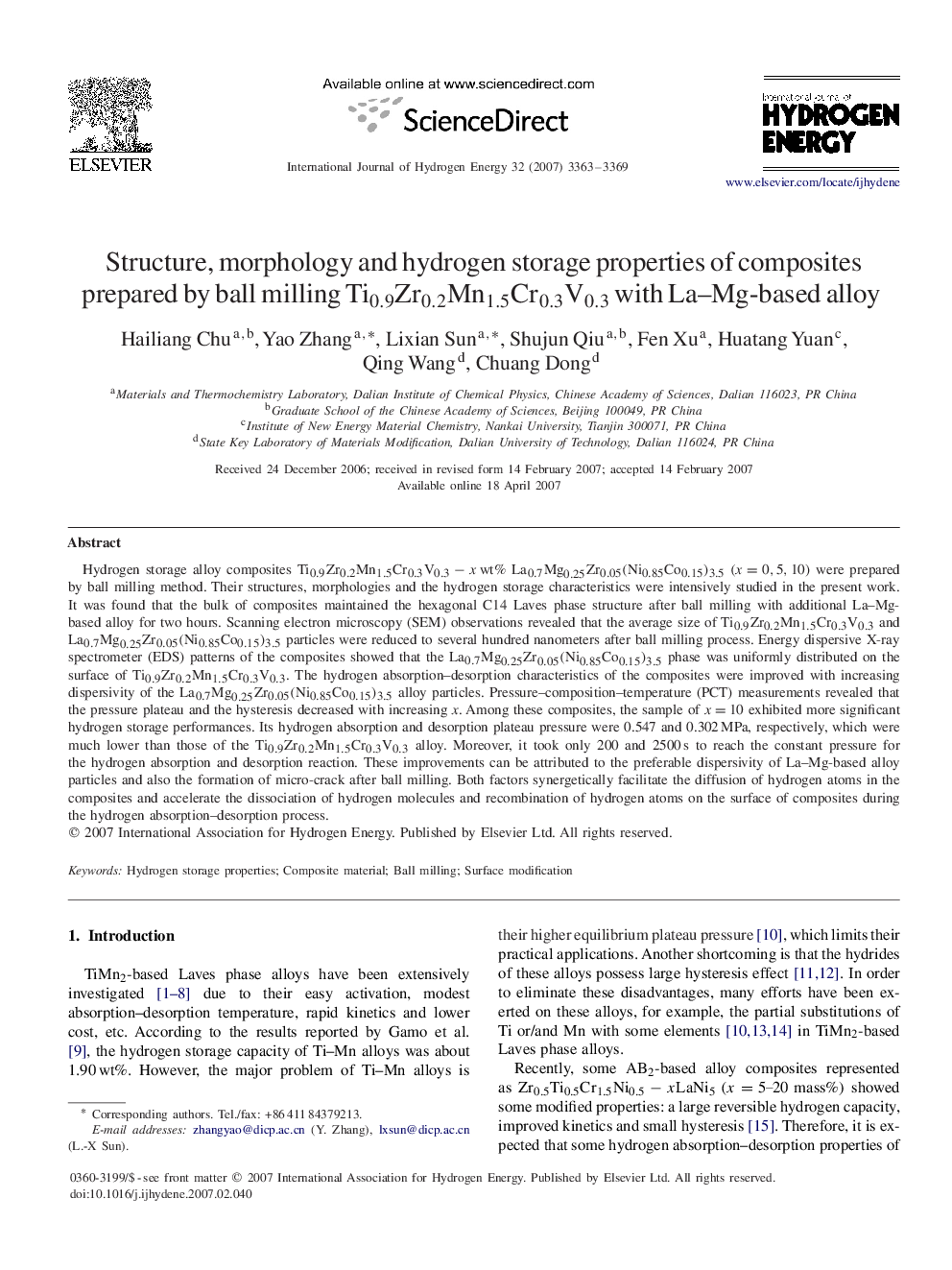| Article ID | Journal | Published Year | Pages | File Type |
|---|---|---|---|---|
| 1279678 | International Journal of Hydrogen Energy | 2007 | 7 Pages |
Hydrogen storage alloy composites Ti0.9Zr0.2Mn1.5Cr0.3V0.3-xwt%La0.7Mg0.25Zr0.05(Ni0.85Co0.15)3.5(x=0,5,10) were prepared by ball milling method. Their structures, morphologies and the hydrogen storage characteristics were intensively studied in the present work. It was found that the bulk of composites maintained the hexagonal C14 Laves phase structure after ball milling with additional La–Mg-based alloy for two hours. Scanning electron microscopy (SEM) observations revealed that the average size of Ti0.9Zr0.2Mn1.5Cr0.3V0.3Ti0.9Zr0.2Mn1.5Cr0.3V0.3 and La0.7Mg0.25Zr0.05(Ni0.85Co0.15)3.5La0.7Mg0.25Zr0.05(Ni0.85Co0.15)3.5 particles were reduced to several hundred nanometers after ball milling process. Energy dispersive X-ray spectrometer (EDS) patterns of the composites showed that the La0.7Mg0.25Zr0.05(Ni0.85Co0.15)3.5La0.7Mg0.25Zr0.05(Ni0.85Co0.15)3.5 phase was uniformly distributed on the surface of Ti0.9Zr0.2Mn1.5Cr0.3V0.3Ti0.9Zr0.2Mn1.5Cr0.3V0.3. The hydrogen absorption–desorption characteristics of the composites were improved with increasing dispersivity of the La0.7Mg0.25Zr0.05(Ni0.85Co0.15)3.5La0.7Mg0.25Zr0.05(Ni0.85Co0.15)3.5 alloy particles. Pressure–composition–temperature (PCT) measurements revealed that the pressure plateau and the hysteresis decreased with increasing x . Among these composites, the sample of x=10x=10 exhibited more significant hydrogen storage performances. Its hydrogen absorption and desorption plateau pressure were 0.547 and 0.302 MPa, respectively, which were much lower than those of the Ti0.9Zr0.2Mn1.5Cr0.3V0.3Ti0.9Zr0.2Mn1.5Cr0.3V0.3 alloy. Moreover, it took only 200 and 2500 s to reach the constant pressure for the hydrogen absorption and desorption reaction. These improvements can be attributed to the preferable dispersivity of La–Mg-based alloy particles and also the formation of micro-crack after ball milling. Both factors synergetically facilitate the diffusion of hydrogen atoms in the composites and accelerate the dissociation of hydrogen molecules and recombination of hydrogen atoms on the surface of composites during the hydrogen absorption–desorption process.
